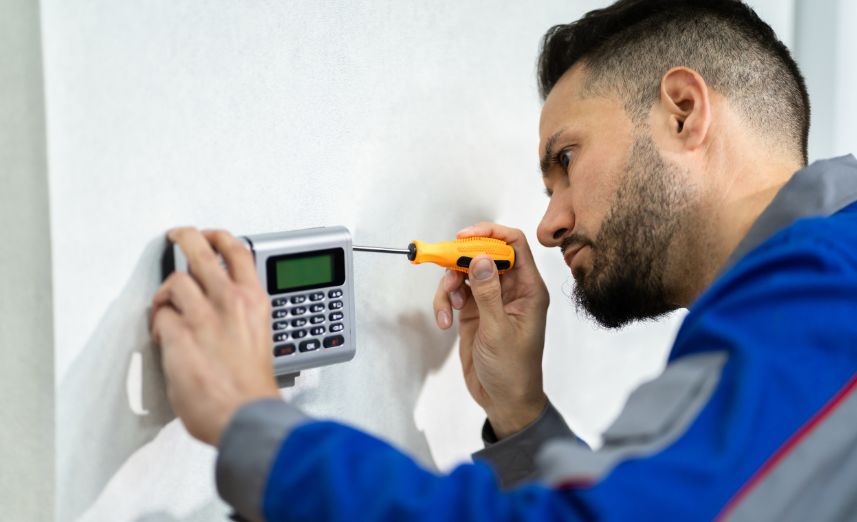Why Professional Installation is Non-Negotiable
In an age of DIY kits available from every major retailer, it can be tempting to try and install a security system yourself. While it might seem like a way to save a few pounds, the reality is that a professionally installed system offers a level of security and reliability that a DIY setup simply cannot match. A professional installation is not just about mounting cameras and sensors; it’s about creating a cohesive, strategic security network with no weak points.
A seasoned installer has the experience to identify vulnerabilities you might overlook. They understand the optimal placement for motion detectors to avoid false alarms, the best angles for CCTV cameras to eliminate blind spots, and the correct way to wire a system into your consumer unit for unwavering reliability. Many insurance providers also offer discounts for homes with professionally installed and maintained systems, particularly those certified by bodies like the NSI or SSAIB. Ultimately, a professional tradesperson provides not just an installation, but a complete security solution tailored to your home’s unique layout and your family’s needs.
Choosing the Right Security System for Your Home
The term "security system" covers a wide range of technologies, each designed to offer different levels of protection. A good installer will first seek to understand your concerns and your property type before recommending a solution. Here’s a breakdown of the most common options available in the UK.
Intruder Alarms: Your First Line of Defence
The classic burglar alarm remains one of the most effective deterrents. When a potential intruder sees a branded alarm box on the exterior of a house, they are far more likely to move on. There are two main types:
- Bells-Only Alarms: When triggered, these systems activate a loud external siren and internal sounder. The aim is to alert you, your neighbours, and scare the intruder away. They are effective and affordable but rely on someone taking action when they hear the alarm.
- Monitored Alarms: These systems are connected to a dedicated Alarm Receiving Centre (ARC). When the alarm is triggered, the centre is notified. Depending on the setup and confirmation of a genuine threat, they can contact you, nominated keyholders, or the police. This offers a superior level of security and is often required for insurance purposes on larger properties or in high-risk areas.
CCTV Systems: Your Eyes on the Property
Closed-Circuit Television (CCTV) has become increasingly sophisticated and affordable. Modern systems provide high-definition images, remote viewing on your smartphone, and intelligent motion detection. This allows you to check on your home from anywhere in the world, receive alerts if motion is detected, and provide crucial evidence to the police if an incident occurs.
- IP/Digital Systems: These are the modern standard, offering high-resolution video (from 1080p HD to 4K and beyond) transmitted over a network. The clarity is exceptional, and features like Power over Ethernet (PoE) mean a single cable can provide both power and data to a camera, simplifying installation.
- Smart Features: Many systems now incorporate artificial intelligence to distinguish between people, vehicles, and animals, reducing false alerts. Features like two-way audio, colour night vision, and integration with smart home hubs are also common.
Access Control and Video Doorbells
Controlling who comes and goes is a fundamental part of security. For flats and some larger homes, keypad or fob entry systems provide secure access without the need for traditional keys. On a smaller scale, the video doorbell has revolutionised front-door security. It allows you to see and speak to visitors from your phone, whether you’re in the living room or on holiday. It acts as a powerful deterrent and records all activity at your doorstep.

